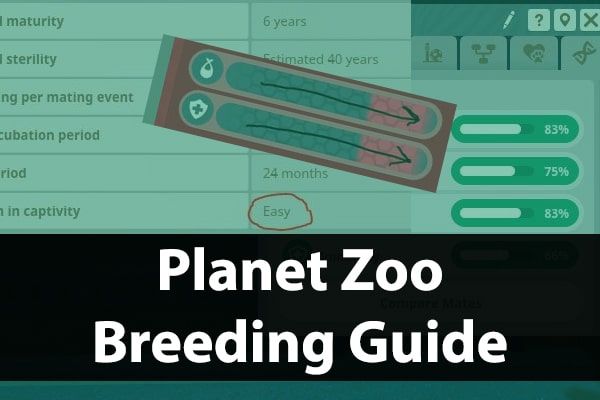For an animal kingdom to survive, it needs to keep reproducing, or breeding.
For your Planet Zoo to survive, you will need to become an expert in this field.
Our complete Planet Zoo breeding guide will therefore inform you of EVERYTHING you need to know, so that your animals will reach their maximum potential.
Breeding Basics
There are 4 attributes that make up an animal, these are defined in the Genetic Makeup section when viewing an animal’s profile.
- Size: The overall maximum size an animal will reach.
- Longevity: How long the animal’s life expectancy is.
- Fertility: How easy it is for successful breeding to occur.
- Immunity: The likelihood of an animal avoiding disease.
Size and Longevity are the two in which we as Zoo managers have the biggest influence on. These attributes tend to vary little between each generation, but can slowly be increased over many generations when breeding successfully.
Fertility and Immunity tend to vary dramatically between each generation of animal. In fact, the offspring of a pair of animals can have the complete opposite percentage on the genetic makeup scale.
There are also hidden values which decide how well an animal can transfer its genetic makeup to the next generation.
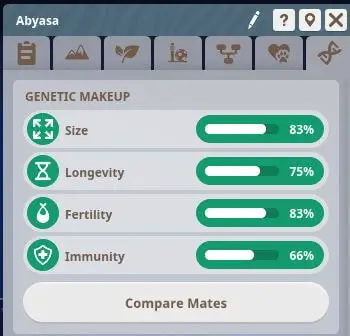
Researching Breeding
Maximising your research for breeding can be done quite easily and is well worth doing before breeding a species.
Assign your researcher to the animal you’d like to breed and wait until they’ve fully researched the animal.
Whilst some animals can unlock a 15% and 30% bonus to fertility, others can reach all the way to 60%, it depends how easy the species can breed.
These bonuses do not stack, so whichever is the highest value you’ve unlocked will be the one that’s active.
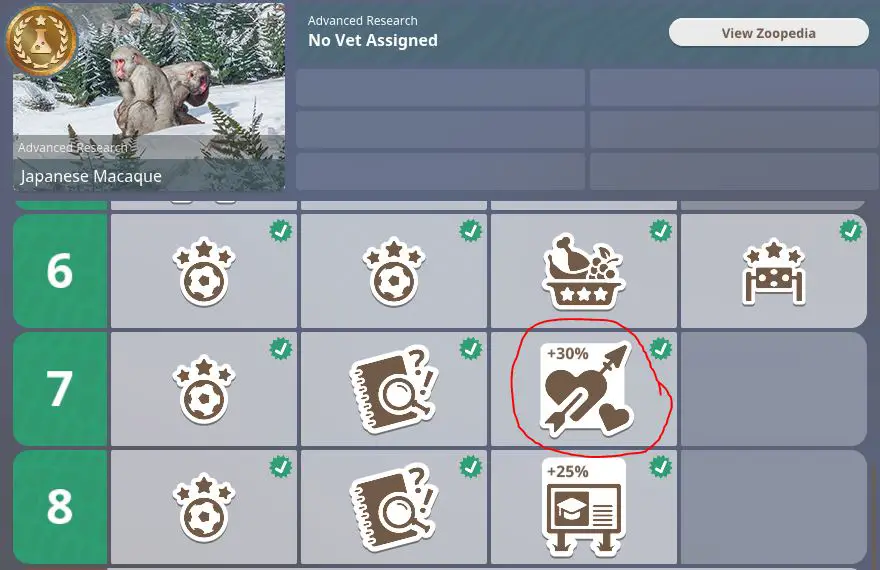
Preparing To Breed Animals
Before you jump in, you need to learn a little bit about your selected animal:
Zoopedia Breeding Research
Firstly, I recommend going to the animal’s Zoopedia page and checking out the Lifecycle section.
In here you’ll see lots of useful information, including how easy it is for the animal to breed and reproduce in captivity. Giant Pandas are very difficult to breed as you’d expect, whilst the Hippo is easy.
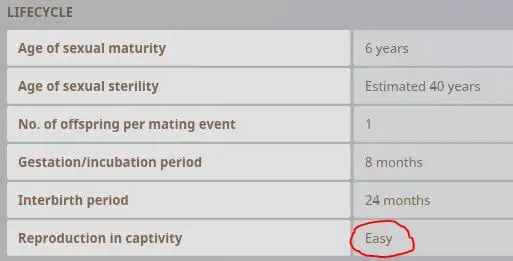
In the Zoopedia, take note of the Group Size details within the Social tab of the animal.
You need to get the balance of male to female animals as well as the amount of animals within the group correct. In the animal kingdom, it’s more socially acceptable for one male to breed with multiple females at once, if you know what I mean…
Prepare to build a habitat that allows one male to breed with the maximum amount of females to get the best results. Here’s the Hippo example…
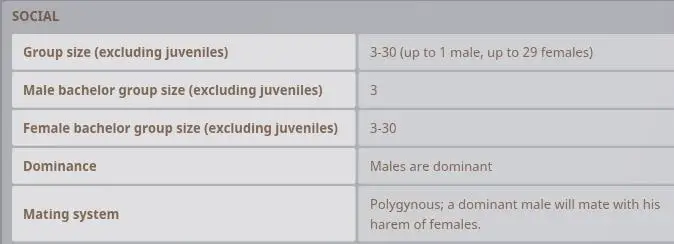
Welfare
Animals need to have a high welfare rating to have the best chances of breeding. For animals that are very difficult to breed, this is particularly important to give them the best chance.
Aim as close to 100% welfare for animals that are very difficult, but for all animals try to ensure their welfare is over 80%, regardless of their difficulty.
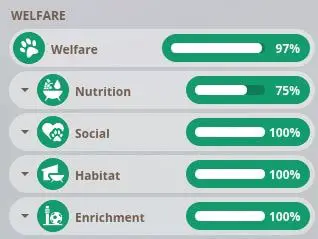
Once you’ve accomplished those tasks, it’s time to get started…
How To Breed Animals
Focus your attention on getting 100% size and longevity first of all – follow the below steps.
As we mentioned, fertility and immunity are more random, so we will concentrate on this later.
Build Your Breeding Habitat
Create a really basic habitat for your animals, but ensure that they’re able to maximise their welfare rating.
Don’t forget to add your staff to the workzone, perhaps you may want to setup a specific breeding area within your zoo, and allow a zookeeper to just look after the animals that are about to breed.
Wait For Reproduction
The breeding process will start once the male animal impregnates the female, crazy right?
A certain amount of time later, the offspring will be born, hopefully with better genetic makeup than its parents.
Time To Breed Again
Once the offspring has matured to an adult, place it in a habitat with an animal of a different gender which should also have good attributes.
Again, wait for reproduction and your offspring should have even better attributes than its parents.
This can be a very slow process to increase your animal’s genetic makeup, so make sure you buy quality on the animal Trade Center where possible to speed things up.
Over time, you’ll eventually have offspring hitting 100% size and longevity, move them into the Trade Center.
The idea is to have multiple animals with maxed out attributes in size and longevity, ready for the next step…
Fertility and Immunity
To maximise the fertility and immunity attributes, you will need to use the Compare Mates screen very carefully.
Thanks to you stocking up on animals with 100% in the first two attributes from the previous step, you’ll have plenty of choice for when comparing mates.
Go to the Trade Center screen and select one of your animals. Remember, they need to have matured to adults before we can breed them.
Select “Compare Mates”. Slowly compare each of the animals of the opposite gender, looking closely at their chances of having offspring with 100% fertility and immunity.
This is highlighted by the red area on the scale. Ideally, you want the red area to be right at the end of the bar, and have a coverage of 25% or less for fertility and immunity. See the below image.

Providing that is the case, put those two animals within the same habitat and allow them to breed. This is the best way to improve your chances of maximising all four attributes.
Keep repeating this process, comparing mates closely each time. Eventually, the red areas will be touching 100% on the scale constantly.
Alternatively, you can attempt the inbreeding strategy…
Inbreeding Animals – The Fast Strategy
To get the fastest results when breeding, you could go down the inbreeding route.
For those of you who don’t know, inbreeding is when the animal breeds within its own generation or family.
Many players choose not to use this strategy as in the real world, this isn’t the preferred method of breeding due to the many complications it can cause with genetics.
However, some animals are difficult to obtain on the market, especially quality in terms of genetic makeup. This means it be be a painful and long process to create new families for your offspring to breed with.
So, inbreeding can really quicken up the pace…
Build The Habitat
Again, setup a breeding habitat as mentioned above. Ensure the animals have superb welfare levels and let the breeding commence.
Decide Who Will Be Breeding
Once the offspring has been born, do not move them into the habitats of other animals to breed, until their size and longevity get to 100%.
Check the gender of the offspring. If it’s a female we need to compare the size and longevity with her mother. If it’s a male, compare with the father.
Whoever has the best size and longevity will remain in the habitat. If the mother or father has worse stats, then it’s time to say goodbye – get rid of them.
Repeat Over And Over
When the offspring has developed into an adult, they will be able to reproduce with their parent.
Decide whether you’re going to keep the offspring or the parent, and keep repeating this process until you reach 100% in both size and longevity.
When you keep reproducing animals with max size and longevity, store them in the trade center ready for the next step.
Again, to maximise the fertility and immunity attributes, you’ll need to follow the previous instructions here.
How Do You Avoid Inbreeding?
Many players don’t want to inbreed due to personal preference when playing Planet Zoo.
Inbreeding may cause malfunctions to DNA in the real world, due to how similar it is.
To stop inbreeding in Planet Zoo, you will need to enable zookeepers to provide contraceptives to the animal you’d like to stop breeding. Alternatively, you can separate offspring from their parents and place them into a different habitat.
Providing Contraception
This an easily done by visiting the animal’s profile.
On the overview tab, there is a pill icon next to the animal’s gender icon, which you can enable or disable. This turns the contraceptives on or off.
Alternatively, to do this faster click Zoo followed by Animals to see your full list of species. Here you can quickly select the contraceptive icon for all animals within your zoo.
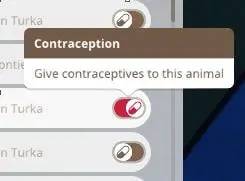
Obviously, you only need to provide one gender with contraceptives if you’d like to put a halt to a species breeding, but ensure all of the males or females have been provided contraception if you want to completely stop reproduction.
This can be useful if you find that your animals are breeding too much and it’s getting out of hand to manage.
Selective Breeding
You could provide contraceptives to animal with poor attributes, to ensure the animals with better genetic makeup attributes are the only ones breeding. Evolution, am I right?
This will improve genetic makeup attributes overtime, without specifically focusing on a breeding strategy.
How To Get Albino Animals
You’ve probably seen them across YouTube videos or other content around the internet.
Albino animals look very cool, and it’s possible to get an albino version of every animal within Planet Zoo.
The animals don’t have red eyes, so they’re not technically albino, but rather luecistic. Try saying that three times quickly.
However, there’s not much you as a player can do to influence whether or not you’ll get a luecistic offspring. Unfortunately, you’ll just have to breed lots and lots, until the lady luck provides you with a white looking animal.


There is hope, once you have one luecistic animal, it can significantly increase the likelihood any offspring will also be luecistic.
Any offspring will have a 50% leucistic genetic makeup. If animals each with the 50% luecistic makeup breed, their offspring will have a 25% chance of becoming luecistic.
If you have two luecistic animals and you’re lucky enough that they’re different genders, you can get them to breed together which should always mean the offspring is luecistic too!
You could also buy albino animals from the Trade Center, but they sell very quickly and the more difficult animals to reproduce often go for around the max price.
Is Breeding Worth Doing?
Animal breeding can be very difficult to manage in Planet Zoo and take up lots of time.
The results can be spectacular, it’s great seeing all of the genetic variety that makes up each animal. I love comparing animals with awful size attributes with those who are maxed out, and can make for some interesting habitats.
It’s also a great way to make some money if you manage to create a successful breeding program that can consistently create animals with amazing stats that will sell quickly on the animal market.
Perhaps you may even make the high scores leader board too within franchise mode, as your animal’s stats are shared with the rest of the world.

